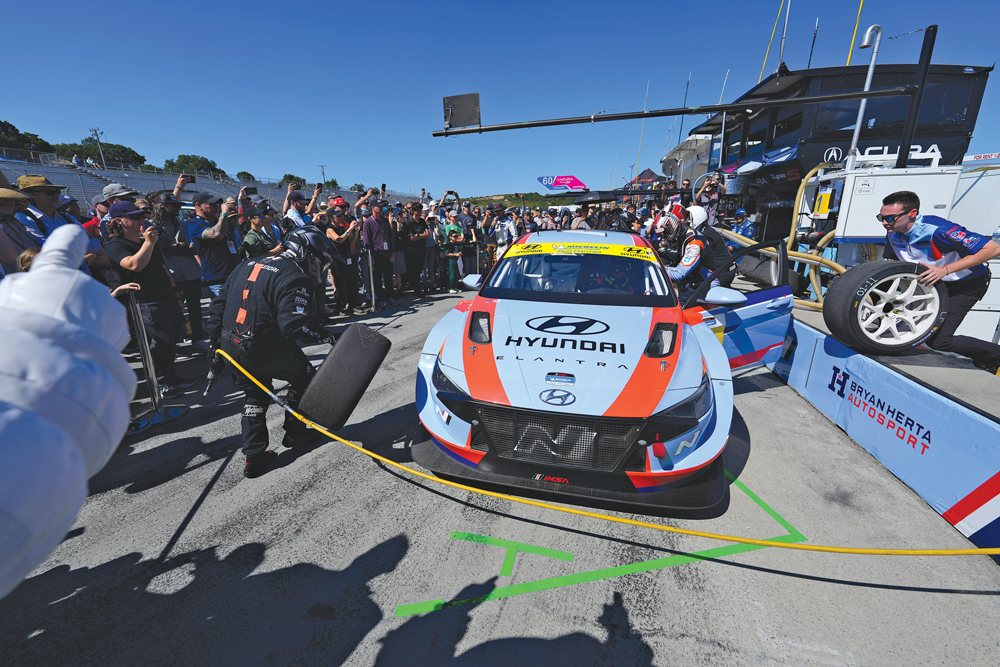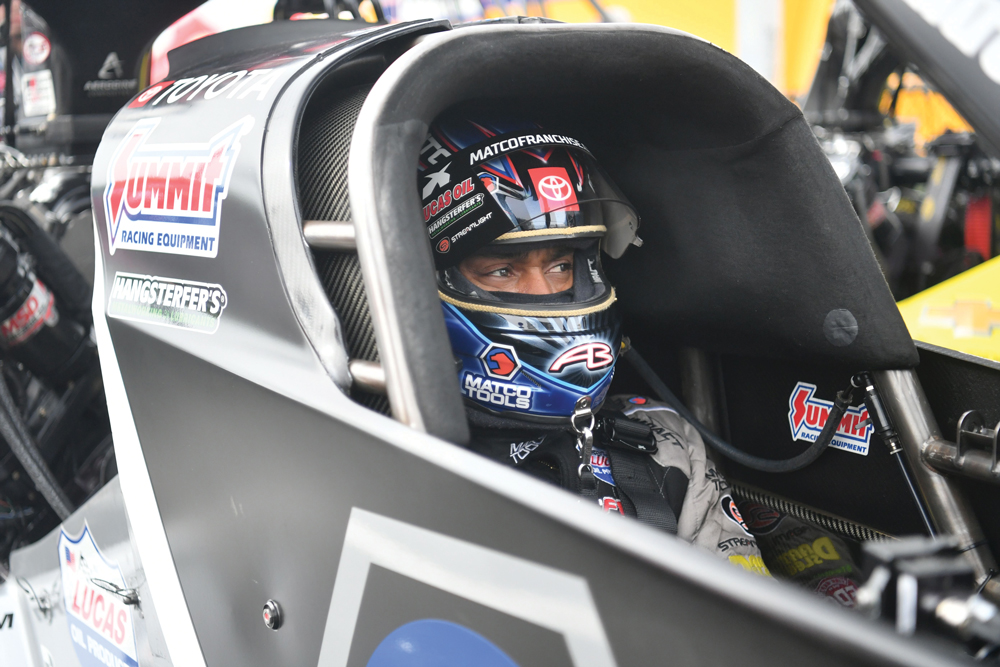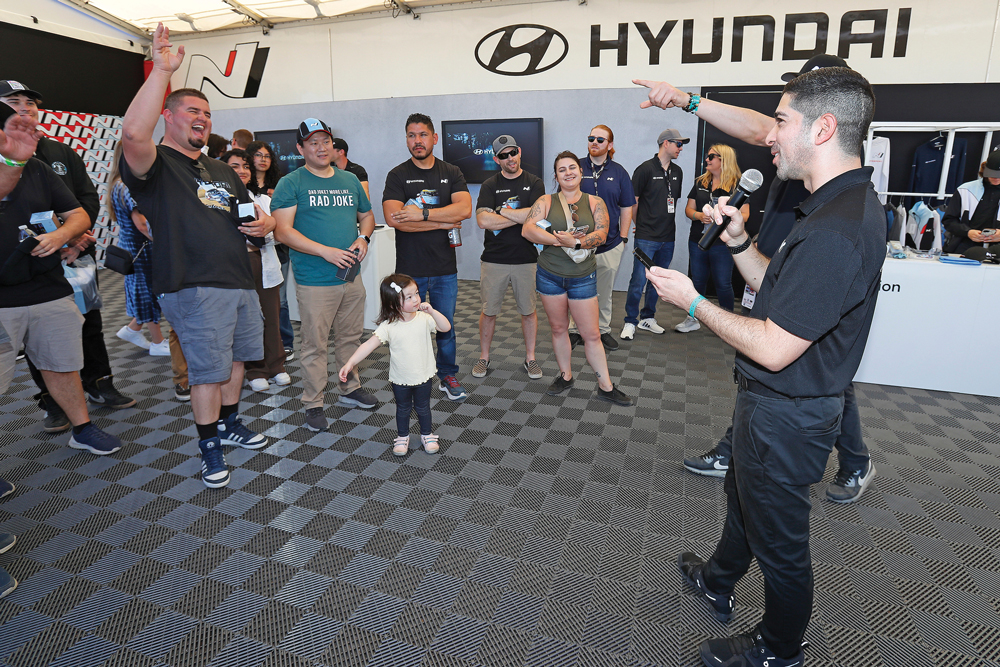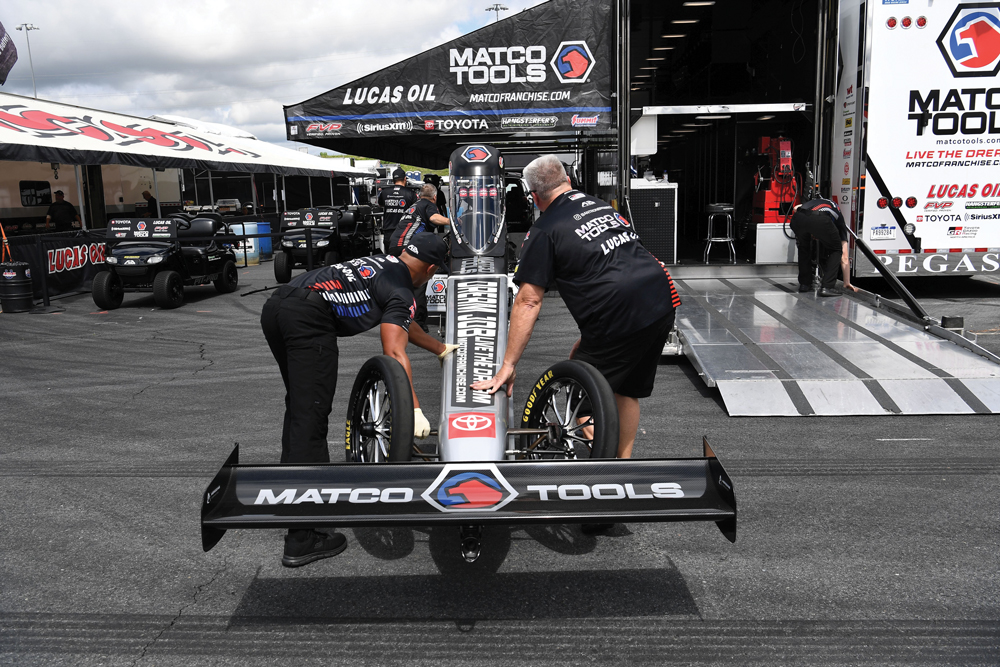Special Report: Successful Sponsor Relationships

Uncovering the secrets to prosperous partnerships between race teams and sponsors.
It’s no secret in the motorsports world that sponsorship money keeps race cars on the track and lights on at the shop, but it’s also no secret that cultivating successful sponsor relationships is often easier said than done. There are a lot of moving parts, and getting everyone rowing in the same direction takes considerable planning and effort.
After all, there’s a lot more to a sponsor partnership than simply a monetary transaction and decals on a race car. At least, there’s a lot more to a good sponsor partnership than those basics.
For this article we spoke with sources who have established enduring and mutually beneficial sponsor relationships. We wanted to hear from both sides of the partnership on what success looked like, and how teams and sponsors navigate their way to winning both on track and in the race for consumer attention. What we heard is that success is measured in different ways, but there are some fundamental benchmarks that any good partnership will meet.
Former IndyCar driver Bryan Herta fields Hyundai Elantra N TCRs in the IMSA Michelin Pilot Challenge series as part of his Bryan Herta Autosport racing stable, based in Speedway, Indiana. “I think good communication really has got to be at the top of the list,” Herta said. “With good communication you can really get aligned. Your partner is going to have goals and objectives, and obviously as a team you have goals and objectives, and trying to align those things through good communication is the basis for a good partnership so everybody is aware of what they’re hoping to achieve, and everybody is clear on what the goals are for the program.”
Other paths to good sponsor relations include finding natural alliances that match the right racer with the ideal brand. Three-time NHRA Top Fuel Champion Antron Brown has a long relationship with primary sponsor Matco Tools, starting with when the company was an associate sponsor during his Pro Stock motorcycle years earlier in his career.
“What makes for a successful partnership is when you’re representing a company that you’re passionate about, plain and simple,” said Brown, who owns AB Motorsports, Brownsburg, Indiana. “For me, I was a mechanic since I was a little kid, so by partnering with Matco Tools, that was like a match made in heaven because I use every single one of their tools. That’s what makes the partner relationship deep, is when you become a part of the brand, not just representing the brand. It makes everything easy. I could never represent a tobacco company because I never smoked a cigarette a day in my life. So the main thing is making sure both sides are a perfect fit, like a puzzle.”
Three-time NHRA Funny Car champion and now team owner Ron Capps of Ron Capps Motorsports in Brownsburg, Indiana, was influenced by the legendary racers he drove for earlier in his career, such as Don “The Snake” Prudhomme and Don Schumacher. For Capps, one attribute that stood out from the best sponsor partnerships was attention to detail.
“Snake would talk about even small things, like our team scooters lined up in front of the pit area. He hated it if they weren’t lined up perfect,” Capps said. “I noticed when I went to my first IndyCar race and saw Mr. Penske’s pit area, that’s the way things were. It was attention to detail with everything. On my end, from representing the sponsors all these years waiting for a chance to be an owner, like with NAPA, who I’ve been with since 2008, I’ve always kind of gone to bed and woke up in the morning thinking about ‘How can I make them better?’”

Alex Striler is the former director of sales and marketing for Team Lucas Motorsports Program and is the author of the book Motorsports Marketing and Sponsorships: How to Raise Money to Race and Give Sponsors What They Really Want. He is currently hosting online summits educating racers and teams as to what sponsors want from representation.
“When a property, team, or an athlete can reach a market that the sponsor or brand or company does not already reach with their traditional marketing, then typically that could become a success,” Striler said. “The goal of sponsorship is to become a marketing extension of a brand, and to open up that market whether it’s relationships through sales, or branding through increasing equity like Red Bull does, into new markets where that company doesn’t yet already market. To market to the same old people in the same old series, the same old races, the same old demographic, that does nothing. A successful relationship opens new markets.”
Beyond the Track
Brightly colored race cars flashing by on the race track are the foundation of everything in motorsports, but race teams with solid partnerships spread the sponsor’s brand message far beyond the confines of the race track.
“We exist to go motor racing. We exist to go win races. That’s our end objective always,” Herta said. “But there’s a whole lot of other sub-objectives that have to happen along the way, and you need partners that are aligned, not just where you’re trying to get to, but the reasons for getting there. In Hyundai we’re just really fortunate that we found a brand that was relatively new to motorsports, certainly in the US, was relatively new to performance vehicles, and so we were able to grow this from what started seven years ago as two TCR cars to a program now where we are the sales, and parts, and service representative for all Hyundai vehicles throughout North and South America. That includes parts distribution, working with other customers’ teams within those markets. We build and sell TCR race cars completely in-house.

“We run a number of activations for Hyundai, including their at-track activations at the IMSA races,” Herta continued. “We run a fairly unique to North America Hyundai driver camp every year where we train all the Hyundai drivers from North and South America on physical training, data, social media, you name it. It’s a pretty intensive program. We capture, edit, and post, and provide Hyundai with a large amount of their social media content as it pertains to motorsports. With their support, we helped them launch a STEM engineering program for female engineering interns.
“We also run an at-track hospitality program, called the N Lounge, at all the IMSA races,” he added. “Basically, we invite anyone with a Hyundai. Anyone with the key to a Hyundai can come into our tent at the races and have a drink, experience some team hospitality, meet a driver. All these facets to our partnership really grew out of a conversation that started eight years ago: ‘Hey, if we got you guys a couple cars and a little bit of money, could you run in the TCR class for us?’ I think showing where it’s gone in that period of time really exemplifies why we embrace the term ‘partnership.’ We’re always looking to listen to Hyundai and understand what their goals are. We try to basically be a one-stop solution for them in everything they need as it pertains to motorsports.”
Good sponsor partnerships will also open up new opportunities and relationships for both sponsors and race teams. “The most successful sponsorships are those that really don’t focus on exposure, but focus on growth,” Striler said. “And growth not just with the brand and the team, but the growth of the entire sponsorship. That includes other sponsors as well. If there’s a tire company that sponsors a racer, that tire company also promotes the wheel company and the oil company and the filter company, and they all cross-promote and they all grow. Successful sponsorships package together the marketing of different companies to all grow to a common consumer.”
AB Motorsports has put that philosophy into action with its sponsors. “What we like to say is, we win on the race track, but we don’t like just winning on the race track, we like winning off the race track,” Brown said. “That’s helping our partners be successful at their business. And also, tying our other partners into B2B relationships and bringing them together.
“We have Lucas Oil, and then we have Hangsterfer’s, which is a metal cutting solutions company that does coolants and Way lubes for CNC machines and manual machines. Hangsterfer’s does a lot of private labeling for other companies,” Brown explained. “We’re able to put them on the car, but then we can tie them into our performance side of where we buy our race products—our pistons, our cranks, our valves. Well, they all use CNC machines, they’re all some kind of machining operation. We’re able to take Hangsterfer’s to all of our vendors where we buy parts and pieces and bring them a higher quality product. We don’t tell them it’s higher quality, we’ll give them some to try. Once they try, they tell us, ‘We love this stuff. We’ve got to have it.’ Then we slowly started converting all of our vendors over to Hangsterfer’s, and they got a better price on a better product, so that turned into more business for Hangsterfer’s, and at the same time, we get better pricing from our vendors from them getting better pricing with the products we sell to them from our sponsors. It’s all in relationships and true B2B business. It’s turned from not just being great on the race track, but you’ve got to be great in the office, too.”
Pleasing corporate executives is one thing, but large companies that sponsor race teams have many employees, franchisees, and vendors, and making connections with them can be as important as outreach to the general public. “The pitside hospitality is probably one of the biggest things that we have in our sport, compared to NASCAR and IndyCar,” Capps said. “Every fan, when they buy a ticket, they get a pit pass. So they go everywhere. Bigger than that is, when NAPA or any of our other sponsors wants to send customers or employees, our pit area is adjacent to our hospitality. Literally, we have a four-star meal served to our customers, and they’re 10 feet away from watching our guys tear the car apart, put it back together, and fire it up. That’s the access that I think really turns a lot of these sponsors on. I always say it’s like a backstage pass. That has been huge with our sponsors. We push really hard on making that the best experience possible.”
That outreach to employees and individual store owners is the kind of street-level marketing that pays big dividends for a company. “It’s critical to NAPA’s success that we be aligned with drivers and teams that act as positive brand ambassadors on behalf of NAPA and help us to celebrate the thousands of individual NAPA store owners and auto care center owners that make up the broader NAPA organization,” said Katherine Wooten, director of partnership strategy and activation for NAPA Auto Parts, Atlanta, Georgia. “So while we have national branding and national-level partnerships, the teams and races themselves are a way for us to show up locally and regionally for our organization. Racing is a great fit for us because teams visit every region that we operate in as a company, and we can engage with our customers and consumers across the country on a week-in, week-out basis. Whereas more traditional sports sponsorships might be tied to one geographic area or marketing territory, our motorsports partners give us connectivity across the organization, and can do it in an authentic way.

“Success for us is knowing that a driver meet-and-greet at a store grand opening is boosting sales and visibility for that NAPA owner, or being able to reward NAPA customers with a VIP day at the track,” Wooten said. “At the end of the day, it’s all about the people and the relationships. Ron Capps, in particular, is one of the best in the business in that regard. He’s as much a part of the NAPA organization as anyone, and people see that in the way that he represents the NAPA brand. You can’t ask for more than that as a company in this business.”
Beyond the Money
Race teams can do plenty to raise the profile of sponsors, but sponsors also do much more than simply sign checks.
“Good sponsorships also are when teams can utilize a company’s marketing, when the company uses that team in the marketing it’s going to do anyway,” Striler said. “Companies are going to create product catalogs, marketing brochures, flyers, coupons, point-of-sale displays, all kinds of things. If a team is used in that media or in any type of marketing, then that team’s other sponsors benefit. There’s that compounding value.”
Striler recalled how when energy drink companies arrived in motorsports, they aided teams in improving the graphics on the cars, building a cooler image. “They really gave teams a new look. Sometimes the appearance that a sponsor can give, the image that a sponsor can give a driver, can enhance that driver’s value significantly.”
Herta has witnessed that image building capability that a sponsor can provide in his own racing program. “The Performance Blue has been a consistent feature in Hyundai’s motorsport programs,” he said. “It’s that light blue color that our race cars are generally seen in. They’ve done a really great job of keeping that look and graphics fresh, always tweaking and updating along the way. I think it gets better every year, and that is something that, as a large auto manufacturer, they have capabilities in those areas and others that we don’t. We’re able to lean on them and their expertise as much as the other way around.”
Sponsors that can provide technical assistance are invaluable to race teams. Ron Capps drives the NAPA Auto Parts Toyota GR Supra in Funny Car competition, and Toyota’s resources as a global automaker enhance the team’s capabilities significantly.

“Toyota has been huge at the track behind the scenes,” Capps said. “They have people that pretty much show us every bump on every lane of every track. That kind of support has been huge with Toyota. I joke about it, but not really. To us, in drag racing, it’s been like F1 stuff. They have this full-on trailer that comes to every race, and they have these guys out on the track and they’re telling us for every part of the track exactly what the temperature is. The technical support is crazy good.”
Ideally, a sponsorship will help a team grow in every aspect of its operation. “They elevate our core capabilities,” Herta said of Hyundai. “As we’ve grown the team, there’s a large number of things besides running race cars that we can do. We’ve been able to grow in size and skill to a point where I’ve bragged on my guys and girls there at the shop before, and said, ‘Our team is structured as a top-line race team, and the fact that we’re running Elantra N TCR cars in the shop right now, I really believe we could roll any type of vehicle that races in North America into one of those work bays and, given a little bit of time and ability to get on top of it, could effectively run a car in any class of North American motorsports.’ That’s been as a result of the partnership that we’ve had with Hyundai. We’ve been able to expand our own capabilities in ways that we would never have been able to do on our own.”
“NAPA views our racing teams as true partnerships. We don’t ever want to be the company that just writes checks and walks away,” Wooten said. “We want to know what’s working, what isn’t, and how we can mutually benefit each other’s business at the end of the day. Some of that means knowing what’s going on in their worlds that we can maybe help with as an organization. During the pandemic, auto parts and supply chains were really constricted, so there were a couple of times that we needed to source hard-to-find auto parts.
“Other times it’s about providing resources to the teams and supporting them in a way that allows them to be successful in their current endeavors, but always with an eye toward what’s next,” she continued. “If our partners are engaged with charitable organizations or doing something off the race track that’s meaningful, we want to show up there and help out, too. Even something small like taking the team to lunch after a big win keeps us connected. We love to celebrate successes throughout the season, in addition to the championships. When teams are supported and working well behind-the-scenes, that translates to success on the track and in the results they put up. It’s a win-win for us.”
Meeting Expectations
Every sponsor partnership comes with expectations on both sides, but it pays to be realistic about expectations, and even more realistic about capabilities.
“What often happens is, a new racer seeking sponsorship will attempt to impress a new brand by overstating what they can do,” Striler said. “And then they actually underperform. When the brand comes in and looks at the expectations, they weren’t met, so those sponsorships are often not renewed. I see that a lot. It happens more than I’d like to see. I would prefer to see drivers and teams lower the expectations by starting out small and then over-delivering every year and exceeding those expectations.”
“Contracts never have goals, they have deliverables,” Brown said. “You always follow deliverables, but to be successful at what you do, you always have to come in and over-deliver what they expect you to deliver. When you do that, the contracts keep getting re-signed because you over-deliver on what you were supposed to, and they want you to keep doing it because they see the value in what you do.”
Expectations and goals between team and sponsor often evolve as the capabilities of each side expand. “I feel like we’re so lucky to have found each other. Because not only is the partnership, I think, successful, but the people involved we genuinely like and enjoy working with,” Herta said. “That’s an added bonus when you can find a company that shares common values. A lot of the things they do involve actively promoting young female interns and engineers through the program. They made additional investment for hand-control systems. We’ve had in Michael Johnson and Robert Wickens, two drivers in North America who’ve run at the very front of the field operating cars completely on hand controls. Those are the extra things that Hyundai does and the kind of things that they allow us to do that we’re really proud of.
“To my knowledge, we’ve had the only female back-to-back road course driving champion in North America in Taylor Hagler. Those are important milestones and things that I know Hyundai loves to celebrate. But we’re also equally proud to be a part of it with them. I think what’s amazing about our partnership with Hyundai is it’s a lot more than just going racing. We get to go racing in ways that are interesting and are difference makers in ways that we can be proud of what we’re achieving.”
Ultimately, successful sponsor relations can be defined as a partnership where both sides come out as winners. “We’ve mutually benefitted. That’s really important,” Herta said. “It won’t continue if only one side is getting what they want or need. Everybody has to benefit.”
SOURCES
AB Motorsports
antronbrown.com
Bryan Herta Autosport
bryanhertaautosport.com
NAPA Auto Parts
knowhow.napaonline.com
Ron Capps Motorsports
roncappsmotorsports.com
Alex Striler
alexstriler.com
 MEMBERSHIP LOGIN
MEMBERSHIP LOGIN JOIN PRI
JOIN PRI


